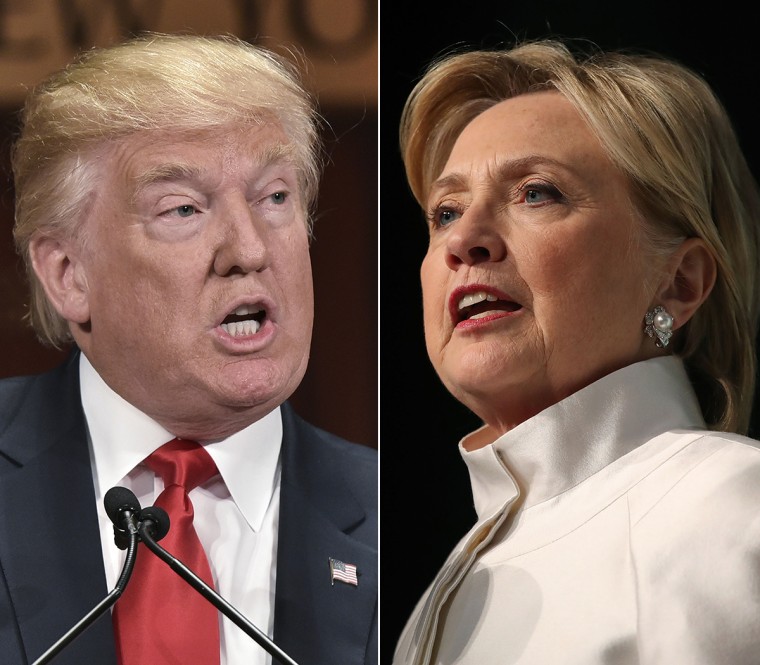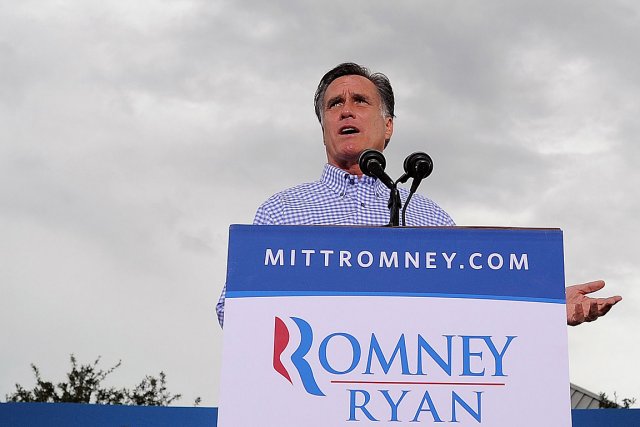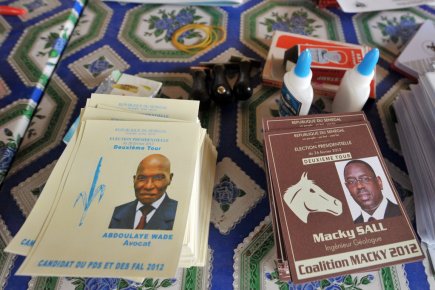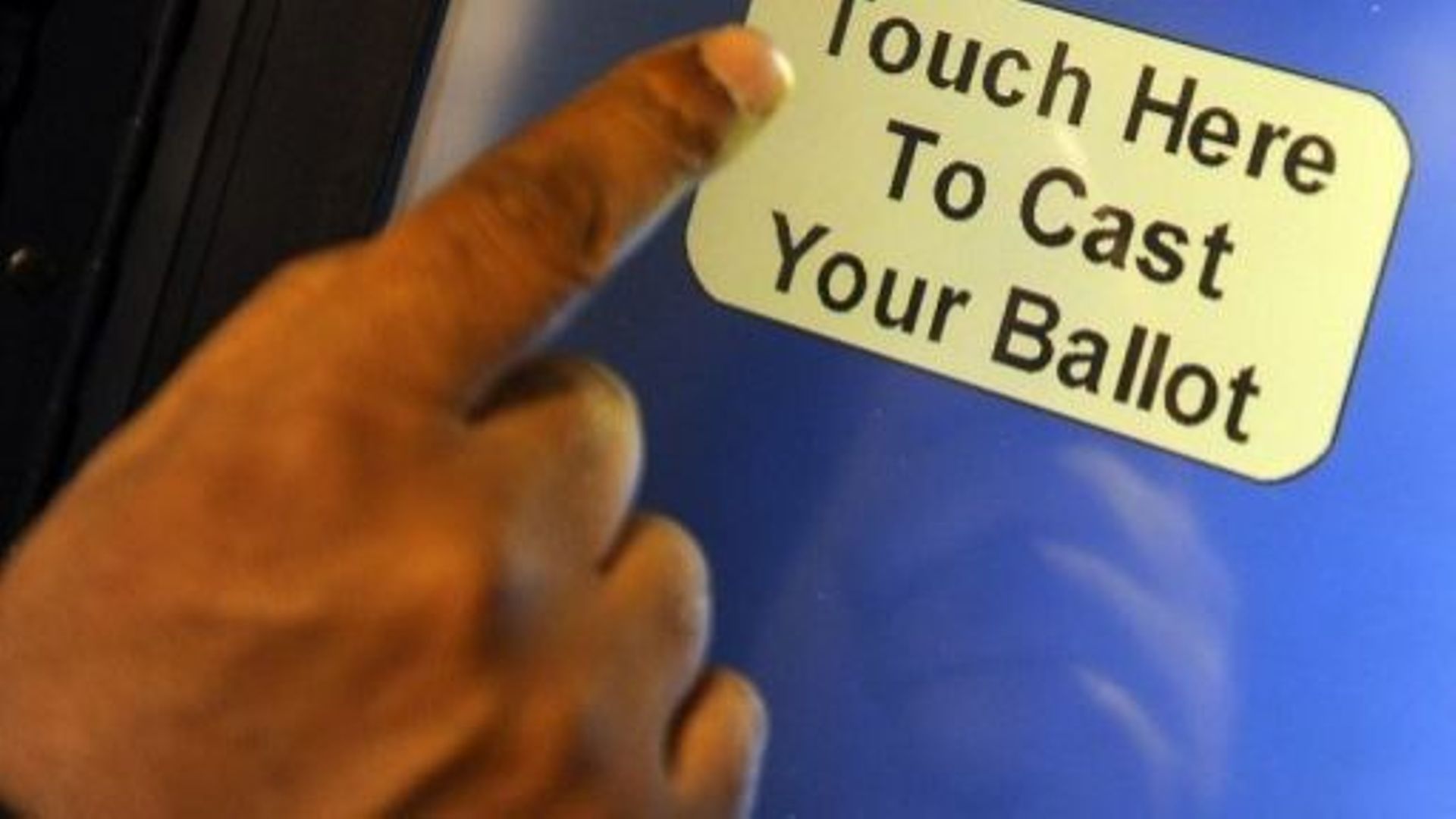Widgetized Section
Go to Admin » Appearance » Widgets » and move Gabfire Widget: Social into that MastheadOverlay zone
Les États-clés à suivre mardi soir
Partager/Share this

Agence France-Presse
Une douzaine d’États sont particulièrement importants dans l’élection présidentielle américaine mardi soir.
Ce sont les États-clés où la bataille est parfois serrée et qui, vu le mécanisme particulier du scrutin, peuvent faire basculer le résultat final.Certains comme la Floride, le gros lot de ces États-clés, font et défont des victoires, parfois à quelques centaines de voix près comme durant l’élection Bush-Gore en 2000.Très surveillés cette année, l’Ohio, la Pennsylvanie et la Caroline du Nord, suivis du Colorado, Nevada, Arizona, New Hampshire et Iowa.Pour gagner l’élection, il faut à Hillary Clinton ou Donald Trump 270 grands électeurs.Ces grands électeurs sont attribués État par État, au gagnant dans chaque État. Plus l’État est peuplé, plus son nombre de grands électeurs est élevé.Voici la liste de ces États-clés, leur nombre de grands électeurs, la moyenne des sondages au 4 novembre selon le site Real Clear Politics, et le rappel des gagnants lors des précédentes élections.
– Floride : 29 grands électeurs. Gagné par Barack Obama (démocrate) en 2008 et 2012, par le républicain George W. Bush en 2000 et 2004. Clinton 47,4 %, Trump 46,2 % (Johnson 2,4 %, Stein 1,3 %).
– Ohio : 18 grands électeurs. Gagné par Obama en 2008 et 2012, par les républicains en 2000 et 2004. Trump 46,3 %, Clinton 43 %.
– Caroline du Nord : 15 grands électeurs. Gagnée en 2008 par Obama et en 2012 par Mitt Romney son opposant républicain. Trump 46,8 %, Clinton 46 %.
– Pennsylvanie : 20 grands électeurs. Historiquement démocrate, gagnée par Obama en 2008 et 2012. Clinton 46,8 %, Trump 43,8 %.
– Virginie : 13 grands électeurs. Historiquement républicaine, gagnée en 2008 et 2012 par Obama. Clinton 46,6 %, Trump 41,4 %.
– Géorgie : 16 grands électeurs. Traditionnellement républicaine. Gagnée par le républicain John McCain en 2008, et par Romney en 2012. Trump 48,3 %, Clinton 42,7 %.
– Michigan : 16 grands électeurs. Traditionnellement démocrate, gagné par Obama en 2008 et 2012. Clinton 46 %, Trump 40,3 %.
– Arizona : 11 grands électeurs. Traditionnellement républicain. Gagné par les républicains en 2008 et 2012. Trump 46,3 %, Clinton 42,3 %.
– Colorado : 9 grands électeurs. Gagné par les démocrates en 2008 et 2012, par les républicains lors des trois précédentes élections. Clinton 42,8 %, Trump 40,2 %.
– Iowa : 6 grands électeurs. Gagné par Obama en 2008 et 2012, par Bush en 2004. Trump 41,7 %, Clinton 40,3 %.
– Nevada : 6 grands électeurs. Gagné par les démocrates en 2008 et 2012, par les républicains en 2000 et 2004. Trump 46 %, Clinton 44 %.
– New Hampshire : 4 grands électeurs. Gagné par Obama en 2008 et 2012. Trump 43,5 %, Clinton 42 %.
What You Need To Know About 2016 Election Polls
By Alex Knapp (Forbes)
Paying attention to the 2016 election can sometimes give you a feeling of whiplash — with the days bringing breathless reports of poll swings, poll declines, talk of momentum and more. But despite the excitement, when you look at poll aggregators — organizations that take a look at the available polls and average them together – the race has been remarkable steady, with Clinton maintaining a pretty constant edge over Trump over the course of the year. You can see an example of this in a chart from Pollster, below.

Presidential poll aggregation from Nov. 1, 2015 to today from Pollster (Credit: Huffington Post/Pollster)
But are the polls reliable? How should average voters understand polls and use them to understand the election? For answers to these questions, I turned to Dr. Sam Wang. Dr. Wang is a physicist, but he also manages the Princeton Election Consortium, which takes data from polling organizations across the country to build a statistical model of election outcomes, and has been doing so since 2004. Here’s a few tidbits you can take out of the conversation to understand polls as we near the end of the election.
Individual Polls Are Often Incorrect, But The Combination Of Polls Is Reliable
The nature of polling means that any given poll is going to be off by at least a little bit, just given the math, Wang explained to me.
“If you sample say, 800 people in a race that’s really 50-50 and trying to get a feel for what voters will do, it’s like tossing a coin 800 times,” Wang said. “If coin is fair you’ll get about 400 heads and 400 tails. But it’d be surprising to get exactly that. You’ll likely get something like 390 heads and 410 tails. It’s impossible to get within better than a few percentage points, because you can’t interview everybody.”
Another aspect of the sampling, too, is that pollsters have to apply their professional judgement. Since different demographic groups have different likelihoods of answering the phone, and that likelihood is different than how likely they are to vote, pollsters have to apply judgement and math to get a good snapshot of the electorate.
“They’re all working to get honest results but they’re applying their own judgement,” says Wang.
By the same token, though, the aggregate of polls can be pretty close to the real result. To continue with the coin flipping metaphor, if you have three different sets of coin tosses that resulted in 395 heads, 405 heads and 398 heads, the median result there is 398 heads — pretty close to the actual result of 400 in terms of the coin flip odds, and closer than the two outliers.
So the key for predicting election results is to look at multiple polls for the same area and take the median value. That said, it’s important to take the median, which is the middle value of a set of numbers, and not the average — which gives much heavier weight to outliers.
“For example, right now in Michigan there’s a handful of recent polls that show Clinton ahead by a few points,” said Wang. “But there’s one that shows her leading by 20 points — that’s way off. If you take the median of all the polls, you have Clinton ahead by a few points, but if you average them, it shows a bigger lead than she likely has.”
Pay More Attention To State Polls Than National Polls, Because The Latter Can Have Wilder Swings
Another thing that Wang cautions voters paying attention to the election about is national polls. That’s both because presidential elections are decided by the electoral college, and also because national polls can produce a lot of wild swings just by their nature. For example, three days ago an ABC-Washington Post poll garnered a lot of attention on social media because a few days earlier the same tracking poll had showed Clinton with a 6-point lead. (The same poll today gives Secretary Clinton a 3-point lead.)
“About 1 in 20 times you’ll get a swing like that,” said Wang. “With about 20 organizations running polls, you’ll see an outlier every day — and outliers tend to get more attention.”
Because of this, Wang encourages voters who want to stay informed to the median of poll results in a few key states rather than national polling. “A few key states are absolutely necessary for Trump. If he doesn’t win those it’s over.”
A Swing Towards Trump Right Now Isn’t Momentum — It’s “Regression To The Mean”
Over the past few days, there have been a few reports showing that in the aggregate, Mr. Trump has gained 2-3 percentage points of support in the election. For supporters of Mr. Trump, this has been seen as a sign of “momentum” for him to overtake Secretary Clinton on Tuesday. But Wang urges caution for both Trump and Clinton supporters interpreting this swing.
“One thing that’s been apparent is that a major feature of voter opinion for last five elections — this is the sixth — is that voters have become entrenched,” says Wang. “The movement of voter opinion has been within a narrow range. In finance and other types of statistical analysis, we call this kind of movement a ‘regression to the mean.’ It happened in 2008, in 2012 and it’s happening this year. When things go too far in one direction, they’ll start to head back to a midpoint. Clinton is now at the low end of where she’s been this season. But if the regression to the mean holds, we should see a little movement back to Clinton. But we’ll see.”
The Brexit Vote Results Were A Pundit Failure, Not A Polling Failure
The specter of Britain’s vote to exit the European Union in June has cast some uncertainty on this election, particularly when it comes to the reliability of polling. But there are a few reasons why Britain’s “Leave” vote shouldn’t color our thinking about the presidential election, says Wang.
“If you look at Brexit coverage, it was really pundit failure,” says Wang. “Commentators were saying there was no possible way for Leave to win. But if you look at the data — and I did this the day before — it showed Remain as only very slightly ahead. I said then it was too close to call and could go either way. That’s what the data was saying. It’s not data’s fault that pundits said Remain was going to win.”
The other thing to consider, says Wang, is that Brexit was a one-off event, but there is a lot of experience when it comes to polling U.S. presidential elections.
“Presidential state polls are the gold standard of polling data around the world,” Wang said. “U.S. pollsters are constantly experimenting with new methods. I’d be very surprised if there’s a community-wide error of more than 1-2 points.”
The Hardest Elections To Predict In 2016 Are For Senate Seats, Not President
While it’s not over until it’s over, Wang notes that Hillary Clinton is “heavily favored to win” the presidential election. What’s really interesting, he said, are Senate elections, which are very close and leave the question of which party will control the Senate in 2017 very much up in the air.
“Six Senate races are within one percentage point,” he said. “If I were a voter I’d be paying attention to the Senate.”
Clinton vs. Trump: Seven Ways Donald Trump Could Win

Donald Trump.
Will Donald Trump win?
(If you’re a Democrat, or just someone who can’t stand Trump, feel free to switch that to: “OMG, is it possible Donald Trump could win?” If you like Trump, you can say the above question with exuberance because it’s more possible on November 5 than it was a week before.)
Sites that forecast the election using different statistical models are still saying it’s not likely Trump will be president, though (and Hillary Clinton has inched back up slightly in forecasting models after falling repeatedly in recent days). That’s because the electoral college math remains formidable for Trump, and here’s the key reason: Pretty much everything has to go right for him on election day in battleground states that are currently tied or almost tied, whereas Hillary Clinton can afford to lose a few. And he needs to pick up a state that was trending her way too.
She has a firewall. He’s trying to break into one. Therein lies the difference. Hillary Clinton is in the power position, but Trump has the momentum (or Trumpmentum as you will.)
The polls have shifted fairly dramatically in the past week. National polls now have the race a virtual tie. Battleground states are tightening, with Clinton’s support eroding in almost all of them since October 27, the day before the FBI director lobbed his letter grenade into the presidential race by sending it to Congress. It’s enough to make Democrats reach for the smelling salts; every time you refresh your RealClearPolitics screen (or FiveThirtyEight) in recent days, it seems, she’s lost more ground in the polls. Still, his math is tougher. Much tougher. We’re headed into election day with a lot of key states as virtual ties. He battled back to that the past week.
However, this question is another story: Could Donald Trump win?
He could win. There also could be polling error (the number of polls nationally is down since 2012 fairly dramatically), and turnout and voter enthusiasm will matter. Start with this premise though: Trump probably has to win Florida. Without Florida, it’s almost impossible to make the map work. Although it is possible (and by possible we mean by winning states where he is at least somewhat close with growing momentum).
Furthermore, all of the different pathways entail Trump winning a string of states that are currently tied in the polls or almost tied. All of his dominoes need to fall. The right way. Of course, if you’re a Trump supporter, you might be thinking: This sounds familiar. Been here before. No one thought he would win the primary, either.
But the demographics and task are different; Trump has alienated various non-white groups, which makes it harder to win some states (but Democrats are worried by some early voting tallies showing African-American turnout is down, although Latino turnout is up. However, blacks have been more lopsidedly supporting Clinton in polls than Latinos have, even with all of the immigration rhetoric.)
We could do the same exercise for Clinton, but it would be too obvious, and that alone underscores the fact that it’s still hers to lose. Clinton wins if she takes Florida most likely. Or North Carolina. Or Ohio. Probably even if she wins Nevada. She doesn’t have to win combinations of those or all of those as Trump largely does. She just needs to take one big one away from his column. And some of those states are virtual ties.
Let’s briefly recap the state of battleground polls using RealClearPolitics polling averages from November 5.
States that are virtual ties (Someone leads by 3% or less, which is in the margin of error for most polls): Florida, Pennsylvania, New Hampshire, North Carolina, Iowa, Colorado, and Nevada.
States Trump leads in single digits: Arizona, Ohio, and Georgia.
States Clinton leads in single digits: Michigan, Wisconsin, Maine (but one Congressional district is tied – we will get to that in a minute), and Virginia.
Now, let’s entertain some hypothetical scenarios that have the nation saying “Mr. President” to Donald Trump. Here are 7 ways he could win:
1. He Wins Pennsylvania
Pennsylvania, with its 20 electoral vote prize, could be a game changer. The state hasn’t gone Republican since 1988, but it has several factors that make it possible for Trump: It’s largely white and non-college educated; it’s divided between pro Trump west and pro Clinton east (think Pittsburgh vs. Philly); the number of registered Democrats has dropped; it’s got one of the highest rates of Obamacare premium increases in the country; and past elections have been fairly close (although not close enough for Republicans).
Here’s another key point. Pennsylvania doesn’t allow early voting to all. Only 5% of the state early voted in 2012. That’s good for Trump because he’s tightened in the polls more recently, and a few weeks ago, he was embroiled in the sexual misconduct allegations he denies.
Remember those states where the polls are virtually tied on November 5? Let’s revisit them. Here’s a map without them, and you will see how desperately Trump needs every one of them. She needs them too. Neither is close to 270 without them. But she’s closer. She’s stronger than he is before seeing how the battlegrounds fall.
How likely is it that Trump will win Pennsylvania?
Four of the five most recent Pennsylvania polls show the race now in the margin of error, as voters tell pollsters they are worried about the economy and jobs. However, Clinton leads in 4 of those 5, and the 5th is a tie. Her average as of November 5 in RealClearPolitics polling averages was 2.6%. But it’s been tightening the past week. She was up an average 5.8% on October 30.
If Trump wins Pennsylvania, he could afford to lose some states where he’s currently leading, like Nevada and New Hampshire (a good thing because early voting trends in Nevada have looked promising for Clinton, and she led in New Hampshire until a few days ago). Trump would also need to win Ohio, Florida, and North Carolina for this map to work, though.
2. He Wins Maine’s Second Congressional District
Here’s a scenario that gets Trump exactly 270 electoral votes.
The keys here: He must win the string of states that are currently tied or almost tied: Florida, North Carolina, Nevada, and New Hampshire. What puts him over the top? The Second Congressional District of Maine, which apportions some of its delegates by giving one to each of two Congressional districts (the statewide winner gets another 2 electoral votes).
Although he’s behind in Maine overall and in its First Congressional District, a recent poll showed the Second Congressional District race was virtually tied.
If this same map held, but Trump lost that district, the race would tie, putting it in the House of Representatives, which is controlled by the GOP. This might be the most likely path to Trump victory because he’s got some momentum in each of the battleground states coded red. But they’d all have to fall right for him. He can even lose Pennsylvania and Colorado and still win this way.
3. He Wins Colorado
Let’s swap out Pennsylvania and give it to Hillary.
Let’s give him Colorado instead.
If Trump wins Colorado, he can afford to lose Nevada (where early voting trends have looked good for Clinton) and the Maine Congressional District.
How likely is it that Trump wins Colorado? It’s more likely than a week ago, but the polls are somewhat contradictory there, and he’s not leading. She leads by 3% in the RealClearPolitics polling averages. Of the 5 recent polls, she leads by 5 and 6 (one of those from a Democratic leaning pollster and one from a Republican); one is a tie; and she leads by 1 and 3 in the final two. (Obama won Colorado in 2012 and 2008, but the state was red in 1996, 2000 and 2004). You remember who was running in 1996 right? Bill Clinton against Bob Dole.
Lots of Coloradans have early voted. The state’s largely white demographics work for Trump, who has alienated various minority groups. The state has a lot of independents.
4. He Loses Florida & Shocks By Upsetting Two States Recently Trending For Clinton
By this scenario, Trump could weather losing Florida, where the polls are basically tied (although the last two showed Clinton in a slightly stronger position).
Lots of Floridians have early voted and those tallies have looked positive for Republicans compared to 2012.
In fact, if Trump won Colorado and Pennsylvania, that would do it, as long as he retained other battleground states that are close. Notice one thing all these maps have in common? North Carolina. It’s very important this year. How likely is Trump to win North Carolina?
He leads an average of 0.8% in North Carolina polling averages. Trump was up by 7 and 2 in the two most recent polls there.
5. He Swipes Minnesota From Clinton
OK, Minnesota sounds like a Hail Mary pass. Not many people are talking about it right now, as the campaigns focus on Pennsylvania, Michigan, North Carolina, and New Hampshire. But let’s puzzle through it for a second.
Minnesotans learned October 24 that their state would have among the highest Obamacare premium increases in the country. The Democratic governor has even said he’s considered the unusual step of creating a multi-million dollar fund to bail people out with state taxpayer money. How dire is it? Bloomberg wrote in late September, “Minnesota will let the health insurers in its Obamacare market raise rates by at least 50 percent next year, after the individual market there came to the brink of collapse, the state’s commerce commissioner said Friday.” And that was before the federal government confirmed the big hikes.
CNN estimated about 100,000 people in Minnesota will face huge premium hikes without tax credits/government subsidies. Is 100,000 people enough to sway the election? Well, who knows how many were already for Trump, but it does give him an issue. The Democratic governor of Minnesota said Obamacare was “no longer affordable.”
And Minnesota hasn’t had a non-online poll since October 22.
October 22 was before James Comey’s letter to Congress. It was also in the wake of all of the sexual misconduct allegations against Trump, which caused him to plummet in polls around the country. The poll before that one, taken in September, showed the race a tie. When Trump appeared at a rally in November in Eau Claire, Wisconsin, news reports said lots of Minnesotans were there (it’s a more than two hour drive, too).
That means it’s not entirely clear how the Comey letter (or Obamacare increases) affected Minnesotans. And the race was pretty tight before. Clinton led but not by double digits.
There have been a string of online polls measuring Minnesota attitudes. They show Clinton leading between 4 and 10 percentage points. No polls measure only a time frame post Comey’s letter, though, online or otherwise. The most recent, by Reuters, was conducted online and straddled a time frame both before and after the letter. It found Clinton up 5.
Plus, Minnesota has a history of electing unorthodox TV stars (remember Jesse “The Body” Ventura?)
Is it likely Trump can win Minnesota? No. But it’s fun to add one in that no one expects. And, again, Minnesota elected a wrestler.
Instead of Minnesota, we could give Trump its Midwestern neighbor, Wisconsin, which has a Republican governor. But Trump has been underperforming in that state’s suburban Milwaukee Republican bastions. Why? Lukewarm support from top GOP leaders in the state, the Never Trumpism of a prominent conservative talker there, and the affluent, college-educated demographics of those counties. Furthermore, higher presidential turnout tends to color Wisconsin blue. Trump does well with rural, working class Wisconsinites. Like those who live “Up North” by…Minnesota.
On Saturday, Trump cancelled a rally he had planned for Sunday in Wisconsin. Instead, he suggested he might head to Minnesota.
6. He Swipes Virginia from Clinton
Or Trump could swipe Virginia. That seems more likely; Virginia was a Republican state from 1968 through 2008 until Obama flipped it (but can Clinton maintain the voter enthusiasm Obama had with millennials and African-Americans in particular?) However, Clinton’s running mate Tim Kaine hails from Virginia, so Virginians would have to thumb their noses at the hometown guy.
It doesn’t get talked about much, but, by this barometer, Kaine was a smarter pick for Clinton than Mike Pence was for Trump. Pence hails from Indiana, a red state. Yes, he helped Trump shore up his base, but he doesn’t bring a state. Virginia would have gone a long way for Trump. It could get him the White House.
Virginia allows Trump to lose Nevada and New Hampshire. However, Clinton leads there an average 5.2% and has polled outside the margin of error in recent polls. However, her standing has been slipping.
7. He Wins Michigan
Look at what Michigan gets Trump. No wonder he’s been campaigning there. If Trump wins Michigan, he could afford to lose a bunch of states he’s competitive in right now, like New Hampshire, Nevada, Pennsylvania, Colorado, and even Iowa, the latter of which most pundits think he has a good chance of winning.
How likely is it, though? Clinton’s polling average there was 4%. Recent polls showed her up 5, 3, and 4. However, she led an average 6.3% about a week ago, showing the race in Michigan is tightening, and Trump and his family have been aggressively campaigning there (as has Clinton).
Still, you can see why Trump is targeting Michigan. It gives him the presidency while allowing him to lose several other tightly contested states. Some of the other scenarios require him to basically run the table.
Here’s the bottom line. They’re tough maps. However, he’s got a lot of different codes that would crack the safe. She has more, though. That should keep everyone up late on Monday night with worry.
Cliquez sur la fleche pour voir la video
Partager/Share this
























































